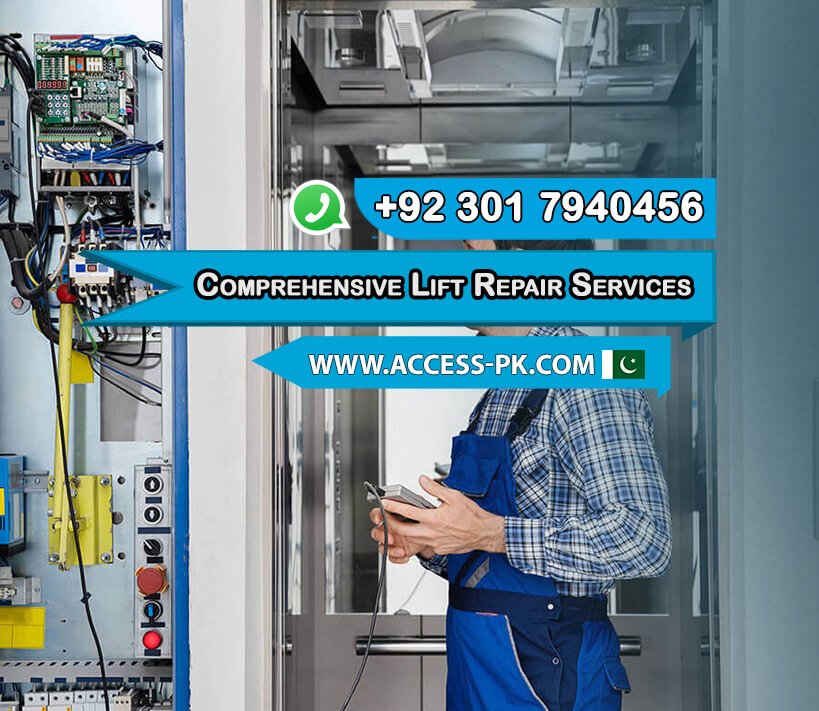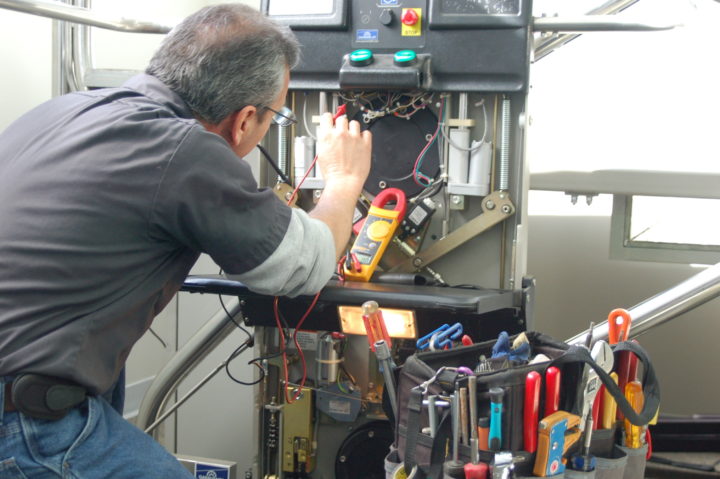Advanced Lift Engineer Course: Get Ready For Occupations with Leading Lift Repair Companies Near Me
Comprehensive Overview to Lift Solutions and Their Maintenance
Browsing the elaborate world of elevator systems and their upkeep is a job that demands accuracy and expertise. From the numerous types of lift systems in usage to the precise adherence to safety and security laws, the upkeep of these upright transport gadgets is a complex endeavor. As structures skyrocket greater and innovation advancements, the demand for a detailed understanding of elevator systems ends up being progressively vital. Join us as we decipher the intricacies of elevator upkeep, exploring typical issues, ideal practices, and cutting-edge modern technologies that shape the modern-day landscape of vertical transport.
Kinds of Elevator Systems
Lift systems can be found in different types, each developed to match specific building demands and customer demands. The most typical kinds include hydraulic lifts, traction elevators, machine-room-less lifts, and vacuum cleaner lifts. Hydraulic elevators are optimal for low-rise structures and make use of a hydraulic piston to relocate the lift automobile. Grip lifts, on the various other hand, are extra fit for skyscrapers and utilize steel ropes and weights to move the car. Machine-room-less lifts are a space-saving choice as they do not call for a different equipment room for the elevator machinery. Vacuum cleaner lifts, an extra contemporary innovation, usage air stress differentials to move the cars and truck within a clear tube.
Each type of elevator system has its very own benefits and downsides, making it vital for building owners and developers to carefully consider their particular needs before choosing one of the most ideal choice. Elements such as constructing elevation, room schedule, power performance, and budget plan restraints all play a significant function in identifying the most effective elevator system for a specific structure.
Usual Upkeep Problems
Routine upkeep of lift systems is necessary to make sure smooth operation and extend their lifespan. Regardless of normal maintenance, elevator systems can still run into common upkeep concerns that need to be without delay addressed to stop disturbances in solution. Among the most constant concerns is door malfunctions. Lift doors may obtain misaligned, causing problems with opening and closing effectively. This can trigger hold-ups and safety risks, calling for prompt attention from maintenance technicians. An additional common issue is associated with the elevator's leveling precision. Guests might experience tripping risks and discomfort if the elevator doesn't line up appropriately with the floorings. Additionally, problems with the control system, such as sensing unit troubles or electrical issues, can trigger the lift to breakdown or quit working completely. Regular examinations and positive upkeep can help determine and deal with these typical maintenance issues before they escalate and impact the total efficiency of the lift system.
Safety Rules and Conformity
Abiding by rigid security regulations and ensuring conformity with industry criteria are extremely important for preserving the operational honesty of elevator systems. Lifts go through an extensive set of safety and security guidelines to protect guests, maintenance personnel, and the basic public. Regulative bodies such as the Occupational Security and Wellness Management (OSHA) in the United States and the European Lift Organization (ELA) in Europe establish standards that cover different facets of elevator layout, procedure, installment, and maintenance.
Conformity with these policies is not just a lawful requirement yet also a moral commitment for building owners and lift maintenance firms. Failure to satisfy safety and security standards can lead to penalties, legal obligations, and, most notably, jeopardize the safety and security of individuals using the elevator. Routine examinations, maintenance Related Site checks, and adherence to security procedures outlined in the policies are important to guarantee the secure and reliable operation of elevator systems. By focusing on security policies and conformity, stakeholders can promote the trust of the general public and alleviate possible risks connected with elevator usage.
Best Practices for Maintenance

Another essential finest method is to immediately resolve any reported problems or uncommon sounds to avoid more damages. Applying a proactive approach to upkeep can save time and money in the long run by avoiding costly repair work or replacements. Building proprietors need to also consider investing in modernization upgrades to enhance the efficiency and safety of their lift systems. By adhering to these ideal techniques, elevator systems can run smoothly and securely, providing dependable vertical transportation for residents.

Advanced Technologies for Effectiveness
Applying advanced modern technologies in elevator systems can dramatically enhance operational effectiveness and traveler experience. lift repair companies near me. One of the crucial improvements in elevator technology is the introduction of location control systems. These systems enable guests to input their desired flooring prior to entering the lift, which then routes them to one of the most efficient vehicle. By lessening unneeded stops and enhancing traveling paths, destination control systems lower wait times and congestion in high-traffic buildings.
Additionally, the integration of clever sensors and anticipating maintenance abilities has reinvented lift upkeep. These sensing units can spot possible issues prior to they escalate, allowing proactive maintenance treatments and reducing downtime. Furthermore, making use of energy-efficient parts and regenerative drives helps in reducing power intake and operating expenses in lift systems.
Additionally, the implementation of cloud-based monitoring and remote diagnostics allows for real-time monitoring of elevator performance and instant troubleshooting of any kind of breakdowns. This proactive method not just boosts system integrity but likewise improves the general customer experience by making sure smooth and uninterrupted lift procedures.
Verdict
In verdict, comprehending the various kinds of lift systems, usual upkeep issues, safety policies, best upkeep practices, and advanced innovations for effectiveness is critical for ensuring the smooth operation of lifts. By sticking to safety regulations and implementing best methods for maintenance, building proprietors can lengthen the life-span of their lift systems and ensure the safety of passengers. It is very important to remain upgraded on the most recent innovations in elevator technology to boost efficiency and reliability.
The most common kinds visit this site include hydraulic elevators, traction lifts, machine-room-less lifts, and vacuum cleaner elevators. Hydraulic elevators are excellent for low-rise buildings and use a hydraulic piston to move the elevator car. Machine-room-less elevators are a space-saving choice as they do not need a different equipment room for the lift machinery. Regular examinations and aggressive maintenance can help determine and fix these common upkeep problems before they rise and affect the overall efficiency of the elevator system.
